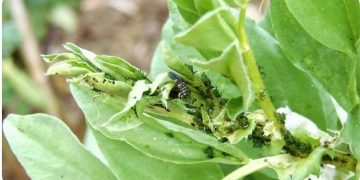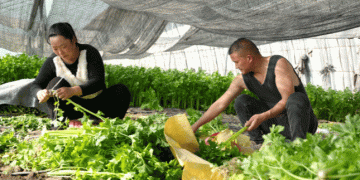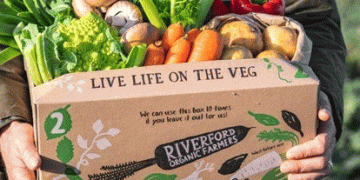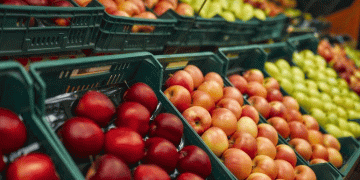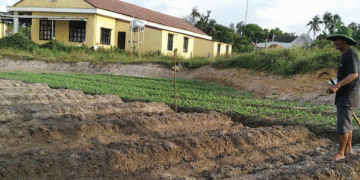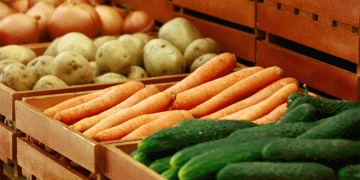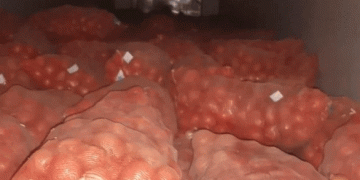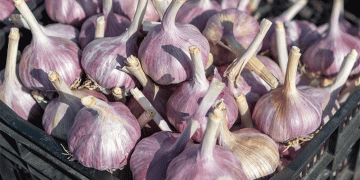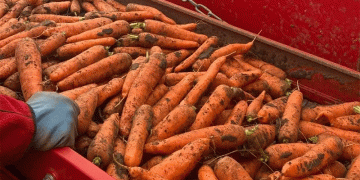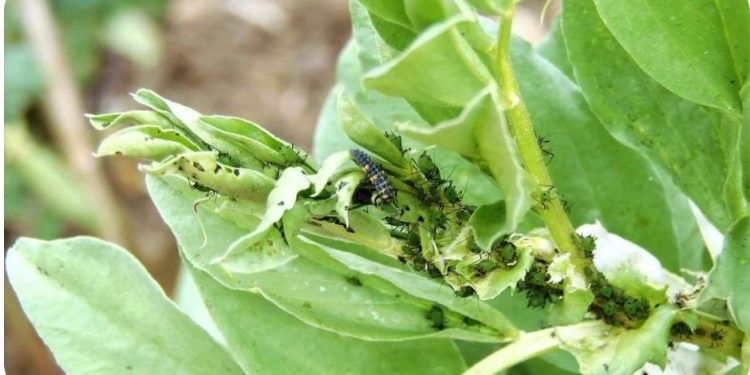Growing Broad Beans from Seed
Hello friends, today we are here with a new topic called growing broad beans from seed and planting guide. Broad Beans are also called by various names such as Fava Bean, Vice Faba, and Faba Bean. These are highly nutritious and fantastic to incorporate in different variety of dishes. Broad Bean plants belong to the Fabaceae family and nowadays cultivated in almost all regions of the world.
Broad Bean plants are upright bushy plants attaining a height of between 2 to 7 feet tall. The Broad Bean itself looks similar to a Lima Bean and is up to 18 inches long. The large-seeded Broad Bean varieties bear about 15 pods while the small-seeded types of plants have about 60 pods. The Broad Bean seed pods have a shelf life of 3 years when stored in optimal conditions. These are superb vegetables and producing high yields from a comparatively small area of the garden. Best eaten freshly picked and home-grown crops have a far superior flavor to those found in supermarkets.
A Step-by-Step Guide to Growing Broad Beans From Seed and Planting
Quick Overview of Growing Broad Beans from Seed
- Botanical Name – Vicia faba
- Family – Legume family
- Plant Type – Annual vegetable
- Height – 2 to 7 feet
- Sun Exposure – Full sun
- Soil – light, not too moist
- Common Name – Fava Bean, Faba Bean, and Broad Bean
- Size – 2 to 7 ft and 8- to 12-inches spread
- Hardiness Zones – Annual vegetable plant and grows best in zones 2 to 7
- Native Area – Southeast Asia and Mediterranean region
- Toxicity – Poses a risk to people with a genetic condition called favism
- Growing Temperature -15 – 25°C
- Germination Temperature – 20-30°C Ideal
- Germination Time – 3-7 days
- Soil pH – 6.2 to 6.8
- Sunlight – 8 to 10 hours per day (Sun-loving Plant)
- Preferred Planting Method – Direct Sowing
- Harvest – Around 3 months after sowing
Varieties for Growing Broad Beans from Seed
There are many Broad Bean varieties of Broad Beans. They are;
- Broad Bean ‘Aquadulce Claudia’ – It is an old favorite and one of the best for autumn sowing.
- Broad Bean ‘Crimson Flowered’ – It is a heritage, red-flowered Broad Bean that makes an ideal edible ornamental.
- Broad Bean ‘The Sutton’ – It is a dwarf Broad Bean variety reaching just 30cm (12″) tall. Perfect for pots or tiny plots.
- Broad Bean ‘De Monica’ – It is one of the earliest maturing varieties from a spring sowing.
- Broad Bean ‘Masterpiece Green Long pod’ – Expect up to 7 Beans per pod from this high-yielding plant variety.
Below are the short selections of Broad Bean varieties, which are interesting for their cultivation, productivity, or taste.
- ‘Trois fois blanche’ – very hardy
- ‘Red Epicure’ – It has bright red seeds
- ‘Primabel’ – very productive, and possibly the highest among all Broad Bean varieties
- ‘De Seville’ – large white color seeds, rather early
- ‘Hystal’ – ideal for early growing
Depending on what you like to grow and the space available there are different types of Broad Beans seed suitable for any garden or allotments space;
Small space – Try the Sutton Dwarf variety is space is limited is a short plant, and needs little protection from the wind and tastes great.
Over winter – The overwintering Broad Bean variety is Aquadulce Claudia.
Quick – The quick-growing variety is Witkiem Manita.
Colour – Karmazyn bean variety offers a deep red color Bean while Robin Hood has big dark green color Beans both look fantastic on the plate.
Soil and Light Requirement for Growing Broad Beans from Seed
Broad Bean plants will grow in full sun or part shade. Broad Bean plants are a cool-season vegetable and prefer full sun when grown in the spring.
Broad Beans grow best in average soil and pH level of 6.2 to 6.8. Cool soil inhibits the bacteria that help legumes fix their nitrogen, using an inoculant, or simply adding extra soil organic matter, will increase the nitrogen levels and make for healthier plants. Then, prepare the soil well ahead of planting by adding compost or manure. Horse, cow, or sheep manure is useful as these manures have low nitrogen content. Broad Beans make their nitrogen so it’s best to avoid using fertilizers that are high in nitrogen like chook manure and fish emulsion. Add sulphate of potash at the rate of one tablespoon every square meter and water in the well. For acid soils, add a dressing of lime or dolomite one handful per square meter to sweeten up the soil and then provide the best conditions for Broad Beans. Prepare the planting site by digging over and then adding leaf mould.
Season to Growing Broad Beans from Seed
- For autumn sowing – October – November
- For spring sowing – February – April
- For planting young plants – May
Normally, Broad Beans are sown in the spring, from February to April. Some plant varieties are hardy and can be sown in the autumn season from October to November. November sowings usually germinate within 2 to 3 weeks. They overwinter during the coldest months but start growing quickly again in the spring season, giving you a head start and an early harvest. In severe winters you could need to use fleece or a cloche to protect your crop.
When sowing Broad Bean seeds directly into the ground in the early spring or late autumn season, put cloches out in advance to warm the soil. This aids seed germination and helps the plants to get established early.
Good and Bad Companion Plants For Broad Beans
- Broad Bean plants love growing near Artichoke, Dill, Aniseed, and Lettuce.
- Broad Bean plants hate growing near Garlic, Red Beet, Shallot, and Onion.
Sowing and Germination for Growing Broad Beans from Seed
Generally, Broad Bean plants are medium feeders and shallow-rooted. So the plants can easily be grown in a 10-liter container. You can grow 2 to 3 plants in a single 10-liter container. If you are using a bigger container and planting in rows then you want to keep about a 6-inch distance between plants and about a 10-inch distance between rows. For sowing the Broad Bean seeds it is a good idea to soak the seeds in Amrut Jal for 24 hours. Also, plain water works fine if you don’t have Amrut Jal. Soaking Broad Bean seeds helps in faster germination. Mark your places where you’ll be sowing seeds in the pot. Now make about 3/4 inch to 1-inch holes in the soil using one of your fingers. Place the seeds on their side in the holes and cover them loosely with the potting soil. Water the pot gently. Be careful not to disturb the soil. As the seeds germinate better in humid conditions it’s a good idea to keep the container covered. Check the moisture in the soil every day. If the moisture level is slightly on the lower side than on the higher side then the Broad Bean seeds germinate better.
In mild areas, sow some cultivars in sheltered sites in the autumn season, for a crop that should be ready to pick in about 30 weeks. During very cold weather conditions it pays to cover the plants with cloches or other forms of protection. The main sowing period of Broad Bean is March and April, although they can be sown in February, under cloches, or in a cold greenhouse, for an earlier crop. Spring sown plants will be ready to pick in about 15 weeks.
Sow seeds about 5 cm deep and 20 cm apart. Dwarf Broad Bean varieties can be sown 15cm apart. They are best sown in double rows, with rows about 20 cm apart. If a second double row is needed this must be positioned 60 cm away from the first. After that, sow extra Broad Bean seeds at the end of the rows to fill in any gaps produced by seeds that don’t germinate.
Sometimes Broad Bean seeds do not germinate or have a very low germination rate. When this happens try to germinate the Broad Bean seeds in a bottle. Wrap your pre-soaked Broad Bean seeds in a damp kitchen towel. Then, place it inside a bottle, close the lid and place the bottle in a warm location. Check after 3 to 4 days if the seeds have germinated. If the seeds have germinated you can sow them in a pot or container. If most of them have not germinated you need to change your Broad Bean seeds.
Tips for Growing Broad Beans from Seed
- Support Broad Bean plants to prevent them from flopping under their weight. Keep your Broad Bean plants well-watered, particularly as the flowers begin to set. Hoe between rows regularly to remove weeds.
- Carefully pinch out the growing tips after the first flowers have set pods to deter blackfly and then encourage further pods to set.
- Broad Bean plants will need to be watered regularly to promote healthy plant development. Although once the plants are well established with plant leaves, be cautious not to get their foliage wet. This can make them sensitive to plant diseases like chocolate spot, Broad Bean rust, or blight.
- When first Broad Bean pods begin to appear, carefully pinch out the first shoot. This will hopefully give you a heavier harvest.
- Tall Broad Bean plant varieties will become heavier as they grow. Give them support against strong winds and use gardening accessories such as stakes, string, and Bean nettings.
- Dwarf Broad Bean varieties require very little support if any. They are ideal for small growing spaces or spaces susceptible to high winds.
- Broad Bean planting should be sown 1-2 inches deep and spaced about 6-8 inches apart. The addition of legume inoculants is recommended at the Broad Bean planting time. Average irrigation is recommended for growing Broad Bean plants are hardy to about -6°C.
- Broad Beans do not require additional fertilization as long as they have sufficient root nodules.
Process of Growing Broad Beans from Seed
Broad Beans grow well in full sun on rich, fertile, and well-manured soil. If soil is wet or clay-based, start plants off in pots to prevent the seeds from rotting in the ground. Broad Beans growing from seed can be sown directly into the ground. If seed sowing in February it can be an idea to help warm the ground with a cloche until the germination process has occurred.
Broad Bean plants are large seeds and quick to germinate. Fill suitable containers like small pots and root trainers with compost, damp it and press down to ensure there are no air pockets. Then place a seed about 7 cm down the pot or container, sprinkle with compost, and cover.
Put in a warm location and germination should occur after a few days. Broad Beans are the hardiest of the Bean family and they can be planted out in March/April and also sown directly into the veg plot from late March /April onwards particularly in more sheltered gardens. Broad Beans will require protection if there are severe weather conditions. Then, plant in double rows about 30 cm apart, shallow about 7 cm deep, plant every 15 cm.
Sowing Indoors – To give Broad Bean seeds the best start you might want to sow them indoors in a propagator. Alternatively and as Broad Beans produce long roots, you can try germinating them in used toilet rolls. Then, fill the cardboard roll with plenty of damp (but not wet) compost, making it quite compact, pop the seed into the top and cover with a layer of compost and place somewhere warmish. Take care not to water too much otherwise, the cardboard will go soggy and collapse before the Broad Bean seeds have germinated. The seeds must germinate in a few days. You will want to harden off the seedlings before planting out, leaving about 20 cm between each seedling.
Sowing Outdoors – Broad Bean seeds can be sown directly into the ground or containers outside and are straightforward. Select a well-drained, sheltered, and sunny site. Dig the ground well before sowing any seeds and then improve the soil by either add some manure or some leaf mould. Sow in staggered rows with one Bean seed placed about 5cm deep and 20 to 25cm apart.
Water and Feeding Requirement for Growing Broad Beans from Seed
Water Broad Bean plants just before the soil dries out but do not over-water them. Keep soil moist during flowering and pod formation. Plant Beans in well-drained soil. Broad Beans do not require feeding apart from planting in fertile and composted soil. Broad beans set up a mutual exchange with soil microorganisms known as nitrogen-fixing bacteria, which help them produce usable nitrogen. Keep planting beds weed-free, and cultivate shallowly to avoid disturbing roots. Like other legumes, Broad Beans fix their nitrogen into the soil and therefore don’t require additional feeding.
Pests and Diseases Management in Growing Broad Beans from Seed
In case if you miss this: How To Grow Organic Beetroot.
Poor Germination or No Growth – If sowing over the winter season it’s worth removing the soil and checking the Bean is still in place. Colder times of the year Beans are prone to be dug up and then removed by small mice and rats. And, always recommend starting seeds in modules over winter and transplant when ready.
Mice – Mice are particularly partial to Bean seeds and will dig them up before they have a chance to germinate. Where mice are the main problem, try starting plants off in the greenhouse. Traps will help to control the problem. Direct sown plants can be covered with fleece during germination to prevent mice from getting to them.
Blackfly – Aphids, particularly Blackfly, are the main problem when growing Broad Beans. They attack the young growing tips. Then, these can be pinched out and the plants sprayed with a suitable insecticide. Companion planting the strong-smelling herb, summer savory, can help repel black Bean aphids.
Chocolate Spot – This disease is distinctive and particularly prevalent during wet summers. Dark reddish or chocolate brown color spots appear on the foliage and stems in severe cases causing plants to die. Infected plants must be removed and destroyed.
Bacterial brown spot
Symptoms – Dark brown necrotic spots on leaves which can be surrounded by a zone of yellow tissue; water-soaked spots on bean pods which turn brown color; bean pods can twist and distort in area of infection.
Management – For controlling this problem, plant only certified seed varieties and remove crop debris from the field after harvest.
Botrytis fabae
Symptoms – Symptoms of the disease can be aggressive or non-aggressive; symptoms on the non-aggressive chocolate spot are small red-brown color lesions on leaves of the plant which can also be present on stems and pods; under high humidity, the disease moves to the aggressive stage and lesions coalesce; large patches of tissue can become necrotic and die. Long periods of high humidity help the switch from the non-aggressive phase to the aggressive phase; the aggressive phase of the disease favors low levels of potassium and phosphorus in the soil and overcrowded plants.
Management – Control must be aimed at preventing the aggressive stage of the disease which can be achieved by lowering humidity.
Black Bean aphid
Sap-sucking aphids will disfigure plants and cause stunting to plant leaves and stems.
Remedy – In the case of Broad Beans, carefully pinch out infested tips. On other Bean types, catch populations when small and squash.
Chocolate spot
Common on overwintering plants or in damp, humid weather conditions, this fungal disease causes brown color spots on leaves and brown streaks on stems and pods.
Remedy – Ensure there is good airflow around plants by spacing them correctly and then keeping the ground weed-free.
When and How to Harvest Broad Beans
Generally, Broad Beans are flexible in when they can be harvested. Having sown Broad Beans of different varieties or successively, you can expect to harvest Broad Beans throughout the spring and summer season. However, March sowings are harvested in July.
Broad Beans grow slower than other Beans. The flowers stay on the plant for 7 to 10 days before turning into pods. Also, the pods take around 15-20 days to grow and become ready for harvest. To know if they are ready for harvest or not press the pods gently and then check for the seeds. If the seeds have formed properly the Broad Bean is ready to harvest. You can do seed saving only if the Bean is an open-pollinated variety.
Generally, every plant flowers and fruits well 2 to 3 times after which the pods become smaller and most of them dry on the plant. So after you have got 2 or 3 batches of harvest, cut off the plant and use it for mulching. Once ready, you can harvest Broad Beans according to how you prefer them and Broad Beans can be harvested young. Young Broad Beans pickings provide a sweeter taste. Then, this is the best time to eat them whole and shelled, either cooked or raw. Broad Beans can be eaten when they are medium in size, with pods about 4 to 6 inches in length. These become larger and visible through their pod. In this case, harvest beans and remove their pod.
Commonly Asked Questions about Growing Broad Beans from Seed
You may also check this: High Density Pineapple Planting.
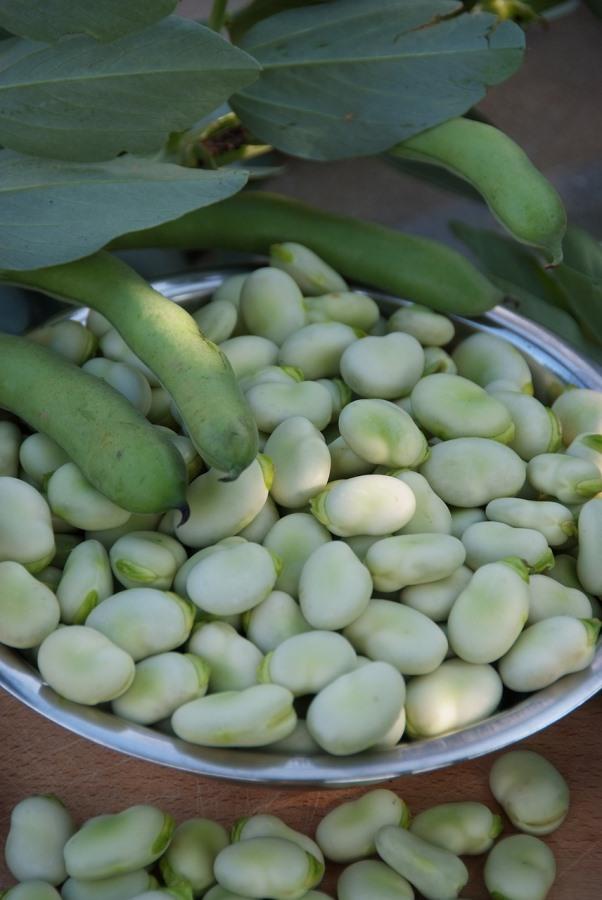
How long do Broad Beans take to grow?
From sowing to harvest Broad Bean plants take about 15 weeks (around 30 weeks for autumn sowings).
How high should Broad Beans grow?
Broad Beans grow to a height of around 1.5 meters. These plants tend to splay outwards and need to be pushed back in within the string supports.
How many Broad Beans does one plant produce?
The amount of pods (each pod contains 8 to 10 Beans) per plant is changes depending on the variety but around 15 to 20 pods is an average amount.
Should you soak Broad Bean seeds before planting?
Broad Beans are best planted as seeds directly and you can pre-soak the seeds overnight in water. The seeds will hold onto some of this moisture, giving them a boost ahead of the germination process.
Why are my Broad Bean flowers going black?
Flowers dying or simply dropping off can be due to temperature or soil moisture. Broad Bean plants thrive in cool and moist conditions. Best planted Broad Bean from Oct to Nov in milder areas or Feb to May for other locales.
Why have my Broad Beans not set?
The standard problem for Growing Broad Beans is caused by sowing too early. They will flower profusely despite cold weather conditions, but the flowers won’t set pods until the cold is over.
Why do Broad Bean plants have flowers but no Beans?
If it is too cold or too windy for bees to be out and about, the flowers die off without forming bean pods. These are reluctant to set bean pods when the weather condition is too warm, but if it is still cool enough for beans to form pods, the problem is to be a lack of insect activity.
Why are my Broad Beans not germinating?
Over-watering can discourage germination for Broad Beans. Through the growing season, always avoid watering on days when rain is likely. Make sure the soil is well-drained and pay friendly attention to the weather forecast.
Can you compost Broad Bean plants?
Yes once you have finished harvesting simply add any unused pods, shells, and plants directly to the compost pile. If your plant has suffered any fungal issues during growth we do not recommend composting.
When to sow the Beans?
Sow Broad Beans in September for a late fall harvest or even in November for spring picking. Beans can be sowed in January for summer harvest in some areas, although if you live in an area of summer heat, be advised that the plants may succumb to these conditions.
